“Dad, that old gobbler hasn’t budged for an hour and a half! What do we do next?”
My dad responded with a convincing, “Come back tomorrow.” Welcome to the unpredictable world of spring turkey hunting. From mentors like my dad, and through trial and error, I’ve learned what tends to work and what doesn’t. Though not every gobbler will follow a rulebook, there are some constants. These are the top five lessons I stick to when going headto- head with turkeys every spring.
Lesson 1: Brush up on Biology
As with any game, research the animal you intend to hunt. Knowing the animal’s basic biology will allow you to connect more often as a hunter. I like viewing wildlife biology through the lens of food, water, cover, and reproduction. These four biological needs make animals tick.
- Food: Turkeys eat many different types of food throughout the year. During the spring, turkeys, particularly hens, eat insects and many types of grasses and plants. Areas that have been treated with late winter/early spring prescribed burns and disking can produce excellent food. Hens concentrate on these areas to build up protein for egg production, and as a result, toms are close by. These are great areas to start your scouting efforts.
- Water: Wild turkeys, like other birds, are able to draw water from many of the foods they consume. However, direct water sources are important for turkey survival as well. Creeks, ponds, and small watering holes are great places to find birds. Turkeys seem to prefer roosting around water, so creek bottoms often provide excellent habitat.
- Cover: Since turkeys roost overnight in trees, adequate roosting sites are extremely important. During your pre-hunt scouting, look for droppings and feathers, which can indicate roosting sites. In addition, listen for gobbling because toms tend to gobble from the roost in the spring.
- Reproduction: Spring marks the reproductive season. As daylight increases, gobblers’ testosterone levels rise and they begin gobbling. Most turkey breeding in Missouri occurs in April and May. Hens generally lay between 10 and 12 eggs before starting a 28-day incubation period. Understanding in detail the full reproductive cycle can play a significant role in hunting success.
Lesson 2: Learn the Language
Wild turkeys have an extensive vocabulary and use it frequently to communicate. As hunters, it pays to understand their language and reproduce calls consistently and realistically.
- Vocalizations: Turkeys have over 20 different documented vocalizations. Although, in some ways it’s important to understand all vocalizations, hunters should become familiar with the yelp and cluck. For sounds of wild turkey vocalizations, visit on.mo.gov/1UFUCx1.
- Devices: To produce turkey sounds, there are a number of calling devices hunters can use. The two main types are friction and air blown. For beginners, a friction call (box or push button) is a great choice. Practice producing the yelp and cluck with consistency on both devices.
Lesson 3: Scout for Success
Someone once said you should scout more than you hunt. This is true with turkey hunting. You will not harvest birds if the property you are hunting doesn’t have turkeys on it, so spend time scouting before the season starts.
Study the Property: Before the season begins, look at an aerial photo of the property you will be hunting and learn the location of property lines and habitat features, such as fields, timber, and water sources. In addition, study a topographical map for terrain clues. While doing your pre-season homework, locate any creeks, fences, or other obstacles that may hinder a gobbler and make a mental note of where these are located. Use binoculars to scan fields for birds and signs such as droppings, scratchings, dusting areas, feathers, and roosting areas. If hunting private property, make sure you have permission well in advance.
- Listen for Gobbling: As spring progresses and flocks begin to break up, toms will routinely gobble at dawn. Start listening for gobblers around the middle of March. If possible, listen once a week on the property you intend to hunt, preferably on clear, windless mornings. Pick an unobtrusive area on the property for listening and arrive at least 30 minutes before sunrise. Keep a log of the number of birds you hear and their location. Use a locator call — owl, crow, or hawk — to solicit gobbles if needed. However, avoid using turkey calls before the season opens (this can potentially lead to unresponsive birds during the season).
- Take Notes: Mark not only where turkeys are roosting, but also where they land after flying down from their roost. If possible, try to observe where the birds frequent throughout the morning. By doing so, you will have a plan in place for mid-morning hunts if your first setup of the day doesn’t pan out. Mapping out the habits of as many birds as possible will give you options, thus increasing your chance for success.
Lesson 4: Nail the Setup
The process of setting up on a gobbler and ultimately “working the bird” is an art and science. Often, bagging a tom depends on setup more than anything else. Setting up to call a gobbler to within range of a shotgun or bow can be broken down into three steps.
- Close the Distance: Get as close as possible to the gobbler or a known turkey hangout, preferably 125 yards or closer, depending on terrain and cover. As you search for a setup, use locator calls to keep tabs on the bird’s location.
- Pick a Spot: Find a location before making any turkey calls in case the gobbler comes in quickly. Turkeys hesitate to cross obstacles, so make sure you avoid setting up with any barriers between you and the gobbler, such as creeks and old fences. Make your setup safe by choosing a tree that is wider than your shoulders and a spot where you are visible to other hunters should they happen to approach your setup. Based on where the tom is gobbling, visualize where the tom may approach and mentally work through taking the shot.
- Settle In: Get a good seat to ensure you remain comfortable. Pack food and drink. Keep your gun up and pointed in the direction you expect the gobbler to approach. Positively identify a legal turkey that is within range of your equipment and ensure the shot is safe. In addition, be prepared for other toms to sneak up on your call.
Lesson 5: Control the Conversation
Successfully communicating with a gobbler and convincing him to come within range of your setup can be both the simplest and most challenging part of spring turkey hunting. After all, the bird/human conversation is what brings many of us to the timber every spring.
In an ideal scenario, you get to within hearing distance of a tom, pretend to be a sweet sounding hen, and the gobbler trips over his beard to get to your location. It ends with a turkey on the table. The challenge comes when the gobbler doesn’t respond to your call for any number of reasons — too many obstacles, stubbornness, can’t see the hen, or already has a hen. However, I’ve found the technique of controlling the conversation to be more successful than others I have tried. Here’s how it works.
- Climb the Ladder: Your call is a form of communication that means something to the turkey — you are speaking his language. Like any other dialogue, you should start with passive calls before climbing to more aggressive ones. Your job is to communicate one message to the gobbler — come to my location.
- Be Realistic: When making calls, be as realistic as possible and throw in other normal sounds as well, such as leaf scratching. Consider using multiple calls to convince the gobbler there is more than one hen.
- Resist the Urge: The key is to avoid immediately responding to a tom right when he gobbles. If you do, you are essentially telling the gobbler you are coming to him because you answered his gobble. Instead, wait until he gobbles and then communicate with yelps and cutting, letting him know you want him to come to you. If he gobbles again, don’t tell him you are more interested in him than he is in you. If you do, he will put the brakes on and expect you to come to him, which is the way it normally works in nature.
Hunting gobblers in the spring can be unpredictable. However, more often than not, toms will follow the rules. Spend time understanding turkey biology, practice calling, scout, strategically setup, and control the conversation. If a bird doesn’t work to your setup on a particular day, you can apply what you learned and “come back tomorrow.”
Rules of the Roost
A roost, or the area where birds rest overnight, usually consists of mature trees. Depending on weather conditions, birds will fly up to roost in the evening, usually around sunset, and will fly down to the ground around sunrise.
For a turkey hunter, the roost is an important area; however, theseare high-impact areas that should be engaged strategically. Here are some guidelines for spring turkey hunting around roosts.
- Gobblers routinely use the same area to roost, but not always in the same tree.
- To roost a bird, go out the evening before your morning hunt and try to determine where a particular gobbler has decided to spend the night. Use locator calls to entice the tom to gobble. Be aware gobblers will sometimes ”hop” trees overnight and may be in a different tree the next morning.
- When setting up on a roosted gobbler, get as close as possible without spooking the bird, usually within 125 yards, depending on the terrain, foliage, and cloud cover.
- Only call to a roosted turkey enough for him to know your location. Don’t attempt to engage in more communication until the bird has flown down to the ground.
- Gobblers often roost with hens, especially early in the season. This is where scouting can pay off big. Early trips can reveal where birds roost and usually the area where they fly down, allowing you to setup in a spot where the birds want to be.
Interested in learning more?
Jake will present a program titled Spring Wild Turkey Hunting and Calling Wednesday, March 23 from 6–8:30 p.m. at the Powder Valley Nature Center in Kirkwood. Call 314-301-1500 for reservations starting March 1.
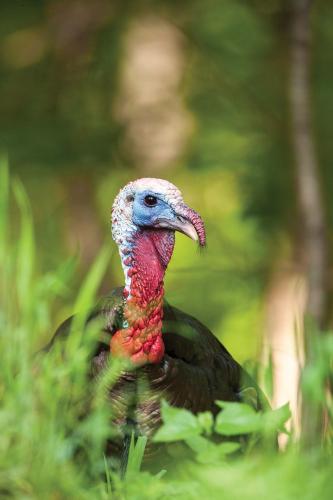
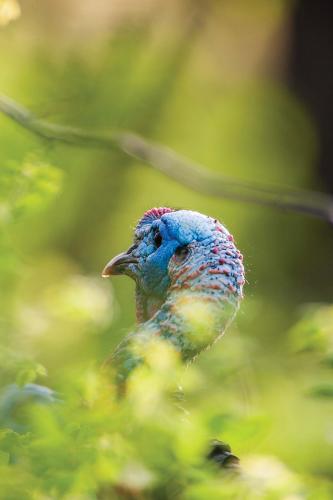

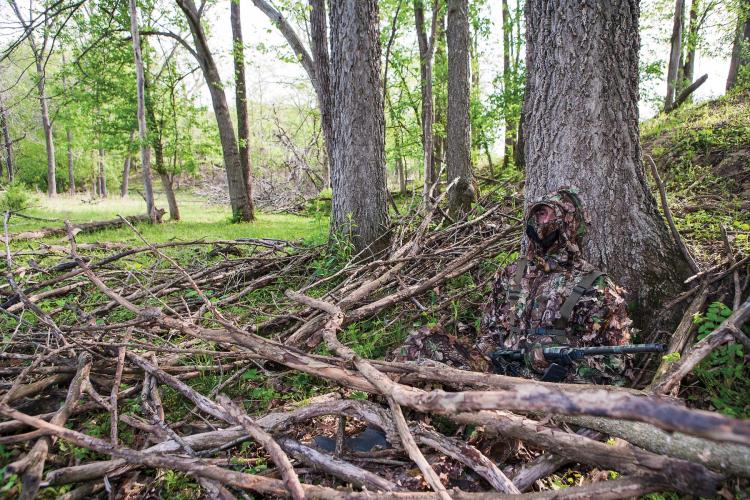
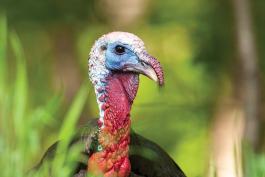
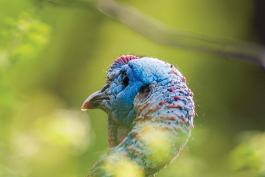
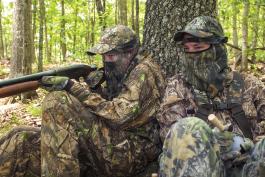
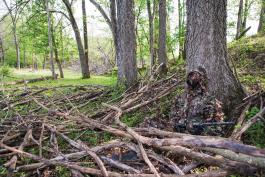
Also In This Issue


And More...
This Issue's Staff
Art Director - Cliff White
Associate Editor - Bonnie Chasteen
Staff Writer - Heather Feeler
Staff Writer - Kristie Hilgedick
Staff Writer - Joe Jerek
Photographer - Noppadol Paothong
Photographer - David Stonner
Designer - Les Fortenberry
Designer - Marci Porter
Designer - Stephanie Thurber
Circulation - Laura Scheuler






















